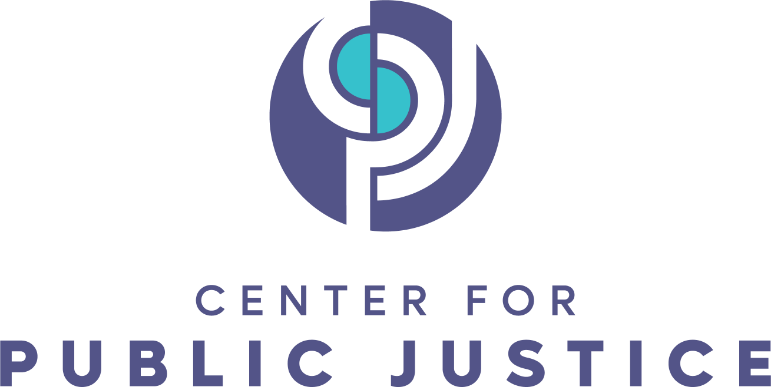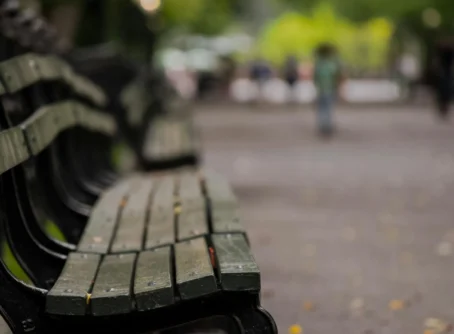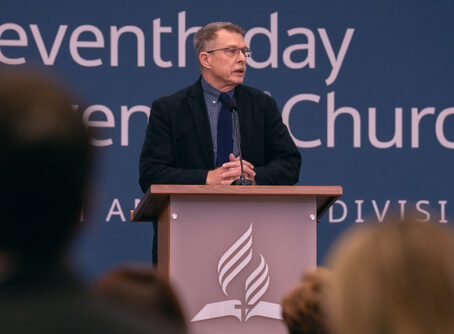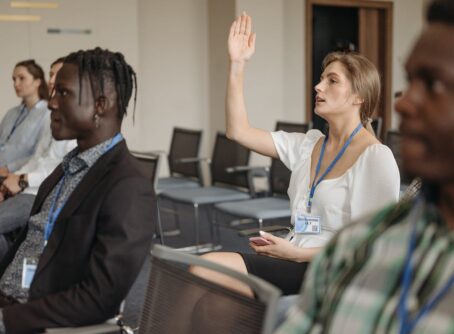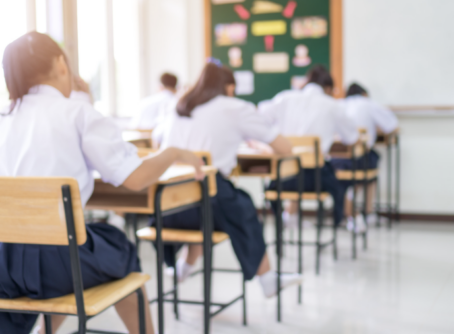
There are 6 million students in a school where there is a School Resource Officer (SRO) — usually an armed member of law enforcement — but no school psychologist on staff, according to a recent Brookings report. The Center for Public Integrity reveals that in the 2017-18 school year alone, almost 230,000 students were referred to law enforcement. These statistics are often used to illustrate the consequences of the school-to-prison pipeline. But what is the school-to-prison pipeline? Sociologist Mark Warren defines it as “an interlocking system of policies and practices that push students of color from low-income communities out of school and into the juvenile and criminal justice system. These policies and practices include exclusionary discipline (suspensions and expulsions) and increased policing”.
History of the School-To-Prison Pipeline
The origins of the school-to-prison pipeline can be traced back to the desegregation of public schools. Wendy Gomez argues that this is evidenced through the placement of SROs (alternatively named police officers) beginning after 1950s school integration. Unsurprisingly, the installation of law enforcement in schools post-integration was immediately discriminatory, as efforts to install officers in all public schools was mainly concentrated in low-income Black and Latino neighborhoods.
The school-to-prison pipeline began to take shape as localized programs gave school officials and SROs the power to identify students as “pre-delinquent”, which allowed school officials to function as part of the criminal justice system by marking students as potential criminals in response to any vaguely defined ‘insubordinate’ behavior. A few decades later, the Juvenile Justice and Delinquency Prevention Act of 1974 was passed, incorporating this practice of “predictive policing” into federal law. Next came the Gun-Free Schools Act of 1994 which set a precedent for student violations to be remedied through punitive, broadly applied laws.
The 1999 Columbine School shooting led to another major leap in the school-to-prison pipeline expansion. Schools implemented “Zero tolerance” for weapons and the Clinton administration established the “Community Oriented Policing Services (COPS) grants which allow[ed]for school/police partnerships.” A study by Brookings revealed that the federal COPS program “distributed $125,000 per new hire” with a single SRO salary costing a locality $70,000. Then, following the Sandy Hook school shooting in 2012, the Obama administration invested a further $45 million into COPS. These pushes for increased policing in schools were driven by intensive media coverage of the massacres at Columbine and Sandy Hook, despite evidence that youth violence had declined in the mid-1990s and was never concentrated in schools.
By the 2000s, the school-to-prison pipeline had been securely established. By 2001 90 percent of school systems had a zero-tolerance or three strikes discipline policy, and in 2013 school policing was receiving four times as much federal grant funding as school counseling.
Consequences
So what have the policies shaping the school-to-prison pipeline done? In short, a lot of harm, with very little evidence of accomplishing what policymakers had hoped.
The pipeline has damaged schools, particularly as it has malformed the teaching profession. Anthropologist Victor Rios writes that “the extension of policing into schools has the effect of transforming educators into ‘agents of the criminal justice system,’ as they rely heavily on SROs to manage their classrooms.”
As a result, the pipeline has damaged educational outcomes. SROs are directly associated with increased suspension rates, and causing students to miss more school days, thus falling behind academically. Brookings reports that any school arrest, whether it leads to court or not, increases a student’s chances of dropping out by 25 percent.
Funding SROs pulls money from other resources like counselors, teachers, and support personnel, exacerbating the harsh realities of already underinvested school communities. In one particular incident in California, local funding allocated for services to English language learners, foster youth, and low-income students was used to support school policing instead. A further investigation revealed that half of the school districts had used these funds for policing.
The pipeline also harms families. A little-known reality is that truancy charges often come with fines. If a child or their family cannot afford the fine, the parent can be jailed as a result. In one particular county, two-thirds of the 1,600 people in jail were women serving time related to their child’s truancy fines. In Jacksonville, Florida, if a child has over five unexcused absences that month, parents can face up to 60 days in jail.
The school-to-prison pipeline can also result in physical harm. While recent attention has been focused on police use of force against adults, Police are actually more likely to use force on young people. AP News reports that the “most common types of force were takedowns, strikes, and muscling, followed by firearms pointed at or used on children”.
However, these uses of force included incidents where “police officers beat schoolchildren with batons, punched them, kicked them, placed them in chokeholds, and in some instances, sexually harassed and assaulted them”.
Black children are overrepresented in use of force incidents, making up over 50% of victims, despite only comprising 15% of the population.
One of the defining factors of the school-to-prison pipeline is its harmful effects on black youth and their communities. Black students are more likely to attend a school with an SRO. While most schools don’t have police, 51% of high schools with majority Black and Latino students had SROs on campus. Black youth are also more than twice as likely as their white peers to be referred to law enforcement or arrested at school. The legacy of SROs being implemented as a result of school integration has continued to harm communities of color well into the 21st century.
In addition to these harms, SRO programs have not accomplished what policymakers hoped, as SROs are rarely qualified to work with youth, and there is little evidence to suggest that they make schools safer. Brookings reports that SROs do not prevent crime, instead, their purpose is to implement disciplinary responses and arrests, meaning that “increases in the [SRO] workforce in schools is related to increases in reporting of crime, higher likelihood or harsher punishments for students… and more reporting of non-serious violent crimes”.
Public Justice Framework
Given the harm that these policies have done, how should we approach reform? First, we must have an understanding of the proper role of government. The CPJ Guideline puts it simply: “The government … bears responsibility to legislate, enforce, and adjudicate public laws for the safety, welfare, and public order of everyone within its jurisdiction”. A healthy government will maintain order in a society, and at times this necessitates punitive measures. However, government also has a nurturing role, investing in and cultivating the well-ordered aspects of society. In this way, the government can uphold public justice.
However, the school-to-prison pipeline is a clear and cataclysmic example of how government public policy can disrupt public justice by harming children, families, and their communities through punitive and ineffectual means of social control. The policies do not fulfill the goal of government balancing its ordering and nurturing qualities and directly contribute to a failure of public justice as children and communities are harmed.
As Christians, we are implicated in this issue through the command to love our neighbor as ourselves (Lev 19:18). This command invites us to identify with the harm the school-to-prison pipeline has done to our neighbors, and motivates us to address this crisis. In addition, God demonstrates a unique love for children, highlighted as Jesus “called a little child to him, and placed the child among them… “[saying] And whoever welcomes one such child in my name welcomes me”(Matt. 18:1-5). The language of this verse mirrors Matthew 25:40 where Jesus says that “whatever you did for one of the least of these brothers and sisters of mine, you did for me.” The school-to-prison pipeline is extraordinarily harmful to children, particularly Black, Latino, and Indigenous children, who face additional barriers of discrimination and racism. The pipeline causes great harm to ‘the least of these,’ and according to Matthew, Jesus calls us to see these children as bearing his image, and to act accordingly.
Government Policies
In the case of the school-to-prison pipeline, much of this issue has been shaped by highly involved federal policies and funding. To dismantle the pipeline, the policies that have formed it will have to be dismantled as well.
A significant piece of the pipeline is the overwhelming presence of SROs in schools. Recently there have been movements to remove the presence of SROs from schools. Notably, Virginia became the first state to bar SROs from charging students with disorderly conduct at school. Teachers are also no longer obligated to report all potential crimes or misdemeanors. Superintendent Dan Russell of Lancaster County Public Schools suggests that this legislative shift will allow teachers to have a “simple conversation” about behavioral issues instead of notifying SROs.
In Oakland, California, the city council voted to eliminate the SRO program and its $4 million annual budget, replacing them with unarmed security officers, due in large part to the Black Organizing Project which had advocated for the replacement of SROs with unarmed peacekeepers that would receive training for de-escalation and trauma-informed practices. In Denver, a similar program of behavioral health counselors responding to nonviolent infractions instead of police has been quite successful. While not applied in school contexts, it demonstrates the viability of programs that decrease extraneous police involvement, giving local governments more confidence in potential adjustments to school SRO programs.
Importantly, these efforts to remove SROs have been coupled with efforts to reinvest the funding into resources like counselors. The lack of school counselors is dire, with over 36 million students enrolled in a school that doesn’t meet the American School Counselors Association’s recommended ratio of 250-to-1 student-to-counselors. School counselors are the frontlines for struggling youth, and gaps in this support may perpetuate behavioral and emotional issues.
Civil Society
As federal funding is removed, and local school districts adjust their policing practices, civil society must be involved in the two-pronged effort to disinvest the pipeline and invest in communities. These efforts to dismantle the pipeline are not new, as communities of color have long been speaking up and organizing. Modern community efforts to remove SROs from schools include advocacy from the youth themselves. Black Swan Academy is a DC nonprofit that empowers Black youth through civic leadership and engagement. Their work includes student-led advocacy to remove police from schools and reinvestment in school improvements to better care for students.
Parents are also involved in community organizing to address the school-to-prison pipeline. The nonprofit Community Organizing and Family Issues based in Chicago, created parent-run restorative justice programs in a range of Chicago schools. These programs involve young people co-leading restorative circles with parents and other community members.
Teachers have had an up close and personal experience with the school-to-prison pipeline, and many are working to dismantle it. Teachers Unite works to create school site-based organizing where teachers build partnerships with students and parents rather than relying on SROs to manage behavior, believing that there must be a cultural shift in how students are treated, in addition to policy adjustments.
Churches are also motivated by their love of neighbor and concern for the vulnerable to organize against the school-to-prison pipeline. The Sojourners Publication reports on several churches involved in this work. One standout example is Rev. Alvin Love and the congregation of Lilydale First Baptist Church’s work to engage the high school across the street. After seeing suspended children wandering the streets during the day, the Reverend worked with the school to create a program where the students would be “suspended” to the church. The church helps students complete homework and resolve conflicts, with 90% of the students never suspended again.
Conclusion
The school-to-prison pipeline is a case study of mission creep, as powerful and unchecked public policies damage schools, harm vulnerable members of society, and wrest authority from the parents, teachers, and youth who have a stake in their community’s well-being. The continuous and vibrant community organizing that has arisen in response testifies to the desire of communities to take responsibility for the care and well-being of their children and invest in their student’s futures. It would be wise for the government to respond to these efforts by removing the aforementioned policies that have caused harm and creating policies in line with community desires for investment and reconciliation.
Emily Keefer is a Senior at Wheaton College studying Political Science and Urban Studies. She interned for the Center for Public Justice during summer 2023. She is currently an intern for the Holy Post Podcast.
